Surgical Procedures
Anterior Cervical Discectomy with Fusion
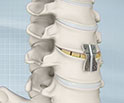
Anterior cervical discectomy with fusion is a surgical procedure to reduce pressure on the spinal nerves and/or the spinal cord due to compression from a herniated disc in the neck. This can cause pain in the neck and arms as well as weakness and paralysis.
Artificial Cervical Disc Replacement
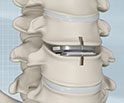
Artificial cervical disc replacement is a spine surgery to replace a degenerated (deteriorated) disc in the neck with an artificial disc. Disc degeneration reduces the height of the disc and may cause a herniated disc.
Artificial Disc Replacement Surgery

An artificial disc replacement surgery is a spine surgery in which an artificial disc is used to replace a damaged intervertebral disc. Intervertebral discs provide cushioning between the vertebrae. When a disc is damaged due to injury or disease, there is loss of vertebral body height and compression of the spinal nerves.
Balloon Kyphoplasty Procedure

Balloon kyphoplasty is a spine surgery that relieves back pain caused by a vertebral compression fracture. Osteoporosis (bone disease) is the primary cause of vertebral compression fractures. Other causes include trauma such as a fall or motor vehicle accident, and some types of cancers affecting the spinal vertebrae.
Invasive Percutaneous Spine Surgery
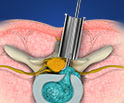
Invasive percutaneous spine surgery employs minimally-invasive technique to treat pain caused by a variety of spine conditions. Spine surgery is traditionally performed through an open method which requires cutting through muscles to access the spine. This can result in tissue and nerve damage with prolonged postoperative healing and other complications.
Lumbar Discectomy Surgery

The lower back or lumbar region is often the site of pain due to its high mobility and weight bearing. Spongy discs present between the vertebral bones of the spine help cushion the spine during stress and movement. These intervertebral discs in the lumbar region may undergo damage due to stress, causing them to herniate or rupture, and compress adjacent spinal nerves.
Lumbar Endoscopic Discectomy Surgery
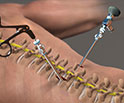
The lower back or lumbar region is often the site of pain due to its high mobility and weight bearing. Spongy discs present between the vertebral bones help cushion the spine during stress and movement. The intervertebral discs in the lumbar region may get damaged due to stress, causing them to herniate or rupture, and compress on adjacent spinal nerves.
Lumbar Facetectomy Surgery
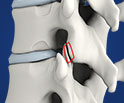
The spine is surrounded and protected by vertebral bones stacked one on top of the other. Adjacent vertebrae articulate with each other at small joints called facet joints, which are present in pairs at the back of each vertebra. Facet joints may sometimes compress or irritate spinal nerves that pass adjacent to them.
Lumbar Foraminotomy Surgery
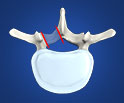
The spine is surrounded and protected by vertebral bones stacked one on top of the other. Between adjacent vertebrae are spaces called neural foramen through which spinal nerves pass to communicate with the rest of the body. Conditions such as a herniated intervertebral disc or bony overgrowth may cause compression of the spinal nerves as they pass through the neural foramen.
Lumbar Spinal Fusion Surgery
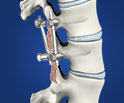
Lumbar spinal fusion is a surgical procedure to join two or more adjacent vertebrae in the lumbar or lower back region in order to stabilize the spine and relieve pain. It may be performed during the treatment of a traumatic spine injury, degenerated or herniated intervertebral discs, abnormal spine curvature or tumors to stabilize the spine after the removal of bone or disc during these procedures.
Spinal Cord Stimulator Implant Surgery
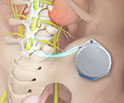
Spinal cord stimulation is a technique used to relieve chronic back or leg pain. This is achieved by directing electrical impulses to particular regions of the spine to interrupt pain signals before they reach the brain. The electrical impulses may be generated by a device called a spinal cord stimulator that is surgically implanted.

